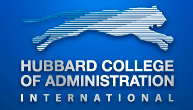The Two Primary Actions of Selling
A logical step in learning the subject of selling is to define the most important term:
“SELLING, the act of assisting, inducing or being responsible for a person buying a product, service, property or idea.” — Modern Management Technology Defined
Sell: A standard dictionary definition of “sell” includes “to exchange or deliver for money or something of value.”
The definition of selling makes it clear the job of the salesperson is often to correctly answer the prospect’s questions, and assist him or her in making the purchase.
At other times the salesperson must induce (lead or move) the prospect through the steps of the selling cycle, using the prospect’s interest as the guide.
Although there are many steps to the selling cycle, including discovering interest, handling objections, and closing, “assisting” and “leading” summarize the two primary actions of selling.
And please note the statement in the first definition, “being responsible for a person buying a product, service, property or idea.”
One of the definitions of “responsible” is “able to be trusted or depended upon, reliable.” With that meaning in mind, the definition of “selling” as shown above emphasizes customer satisfaction as a critical element of selling success.
© 2011 Hubbard College of Administration. All Rights Reserved. Quoted material by L. Ron Hubbard: © 1976 L. Ron Hubbard Library. Grateful acknowledgment is made to L. Ron Hubbard Library for permission to reproduce a selection from the copyrighted works of L. Ron Hubbard. IA # 11042201

